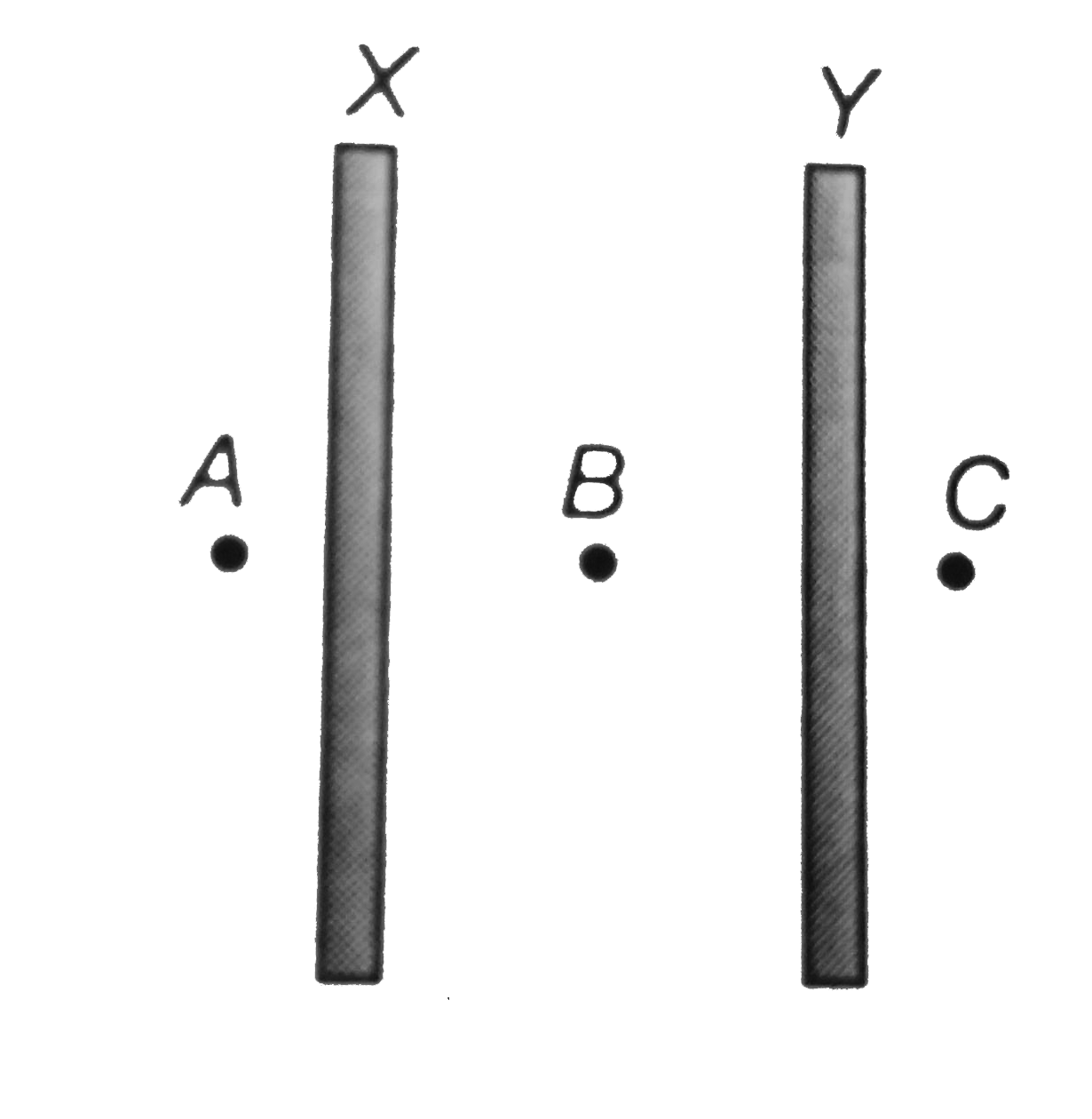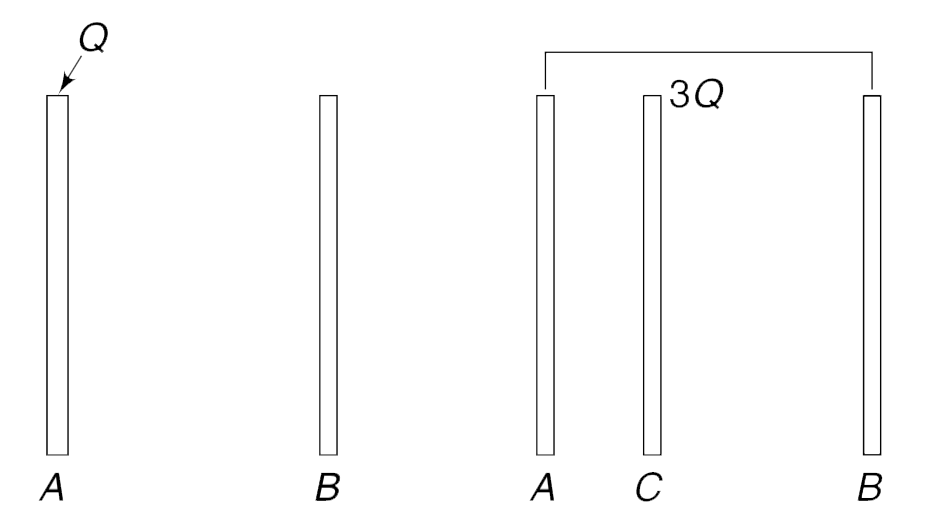A, B, and C are three large, parallel conducting plates, placed horizontally. A and C are rightly fixed and earthed in figure . B is given some charge . Under the electrostatic and gravitational forces, B may be

in equilibrium if it is closer to A than to C
in equilibrium midway between A and C
B can never be in stable equilibrium .
in equilibrium if it is closer to C than to A.
The correct Answer is:A, C
a.,c.
As A and C are earthed, they are connected to each other. Hence, 'A+B' and 'B+C' are two capacitors with the same potential difference. If B is closer to A than to C, then the capacitance CAB>CBC. The upper surface of B will have greater charge than the lower surface. As the force of attraction between the plates of a capacitor is proportional to Q2, there will be a net upward force on B. This can balance its weight.
Topper's Solved these Questions
- MISCELLANEOUS VOLUME 3Book:CENGAGE PHYSICSChapter:MISCELLANEOUS VOLUME 3Exercise:Assertion and Reason Type
Explore 8 Videos
- MISCELLANEOUS VOLUME 3Book:CENGAGE PHYSICSChapter:MISCELLANEOUS VOLUME 3Exercise:Comprehension Type
Explore 94 Videos
- MISCELLANEOUS VOLUME 3Book:CENGAGE PHYSICSChapter:MISCELLANEOUS VOLUME 3Exercise:True and False
Explore 3 Videos
- MECHANICAL PROPERTIES OF SOLIDSBook:CENGAGE PHYSICSChapter:MECHANICAL PROPERTIES OF SOLIDSExercise:Question Bank
Explore 4 Videos
- MISCELLANEOUS VOLUME 5Book:CENGAGE PHYSICSChapter:MISCELLANEOUS VOLUME 5Exercise:Integer
Explore 12 Videos
Similar Questions
X and Y are large, parallel conducting plates close to each other. Each face has an area A. X is given a charge Q. Y is without any charge. Points A,B and C are as shown in the figure.

View SolutionAn arrangement of three large metallic parallel plates with respective charges marked in figure is shown . What is the charge appearing on the left face of plate B ?
View Solution
Knowledge Check

A,B and C are three large, parallel conducting plates, placed horizontally. A and C are rigidly fixed and earthed. B is given some charge. Under electrostatic and gravitational forces, B may beAin equilibrium midway between A and CBin equilibrium if it is close to A than to CCin equilibrium if it is closer to C than to ADB can never be the stable equilibrium.X and Y are large, parallel conducting plates close to each other. Each face has an area A. X is given a charge Q. Y is without any charge. Points A,B and C are as shown in the figure.
 AThe field at B is Q2εABThe field at B is Qε0ACThe fiels at A,B and C are of the same magnitudeDThe fieds at A and C are of the same magnitude, but in opposite directions
AThe field at B is Q2εABThe field at B is Qε0ACThe fiels at A,B and C are of the same magnitudeDThe fieds at A and C are of the same magnitude, but in opposite directions
A,B,C are identical, parallel conducting plates arranged at equal separation B lies between A and C. A and C are joined together and connected to one terminal of a cell. B is joined to the other terminal of the cell. A and C now have charge Q each.B has charge qAQ=−2qBq=−2QCq=−QDq=−3Q/2
A and B are two large identical thin metal plates placed parallel to each other at a small separation. Plate A is given a charge Q. (i) Find the amount of charge on each of the two faces of A and B. (ii) Another identical plate C having charge 3Q is inserted between plate A and B such that distance of C from B is twice its distance from A. Plate A and B is shorted using a conducting wire. Find charge on all six faces of plates A, B and C. (iii) In the situation described in (ii) the plate A is grounded. Now write the charge on all six faces.

View SolutionThree large plates A, B and C are placed parallel to each other and charges are given as shown. The charge that appears on the left surface of plate B is

View SolutionTwo conducting plates A and B are placed parallel to each other. A is given a charge. Q1 and B a charge Q2. Find the distribution of charges on the four surface.
View SolutionTwo conducting plates A and B are placed parallel to each other. A is given a charge. Q1 and B a charge Q2. Find the distribution of charges on the four surface.
View SolutionThree identical parallel conducting plates A, B and C are placed as shown. Switches S1andS2 are open, and can connect A and C to earth when closed. +Q charges is given to B.

View Solution
